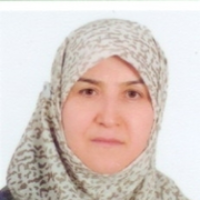Rearranged Bovine Rotavirus Production through Cultivation of Virus by High Multiplicity of Infection (MOI) in Cell Culture and Amplification of Non-structural Genes using RT-PCR
Author(s):
Abstract:
Objective
Group A rotaviruses (GARV) are responsible for the vast majority of severe diarrhea worldwide that kills an estimated 600،000-870،000 children annually. Since infantile gastroenteritis is a main health problem، therefore diagnosis and treatment of this disease is crucial. Gene rearrangements have been detected in vitro during serial passages of the virus at a high multiplicity of infection (MOI) in cell culture، as well as in chronically infected immunodeficient individuals. In this study، we developed an RT-PCR method to detect and diagnose the standard and gene rearranged bovine rotavirus. Methods
Rotavirus RNA was extracted from confluent monolayers of infected MA-104 cells، stained with silver nitrate، and then electrophoresed in a 10% polyacrylamide gel. The full-length gene products that encoded the NSP1، 2، and 3 genes of the standard and rearranged rotavirus were amplified by RT-PCR using specific primers. Results
We observed rearranged NSP1 and NSP3 genes that had different migration patterns seen with polyacrylamide gel electrophoresis. NSP1، 2، and 3 gene segments from standard and rearranged rotaviruses were amplified by RT-PCR، then the complete nucleotide sequence of each gene was subjected to sequencing. The results showed the generation of gene rearrangement through serial passages of the bovine rotavirus RF strain. Conclusion
Serial passage of rotavirus in cell culture at a high MOI and chronic infection in immunodeficient target groups might alter rotavirus evolution. The methods utilized for detection and characterization of rotaviruses are continually evolving and being refined. Data collection is necessary to understand the molecular and antigenic features of the rotavirus in order to have a successful implementation of rotavirus studies and the development of a rotavirus vaccine. This study shows the importance of genetic variation and can provide valuable information about the amplification، diversity، biology، and evolution of rotaviruses.Keywords:
Language:
Persian
Published:
Journal of Pathobiology Reaearch, Volume:15 Issue: 3, 2013
Pages:
1 to 9
magiran.com/p1084244
دانلود و مطالعه متن این مقاله با یکی از روشهای زیر امکان پذیر است:
اشتراک شخصی
با عضویت و پرداخت آنلاین حق اشتراک یکساله به مبلغ 1,390,000ريال میتوانید 70 عنوان مطلب دانلود کنید!
اشتراک سازمانی
به کتابخانه دانشگاه یا محل کار خود پیشنهاد کنید تا اشتراک سازمانی این پایگاه را برای دسترسی نامحدود همه کاربران به متن مطالب تهیه نمایند!
توجه!
- حق عضویت دریافتی صرف حمایت از نشریات عضو و نگهداری، تکمیل و توسعه مگیران میشود.
- پرداخت حق اشتراک و دانلود مقالات اجازه بازنشر آن در سایر رسانههای چاپی و دیجیتال را به کاربر نمیدهد.
In order to view content subscription is required
Personal subscription
Subscribe magiran.com for 70 € euros via PayPal and download 70 articles during a year.
Organization subscription
Please contact us to subscribe your university or library for unlimited access!


